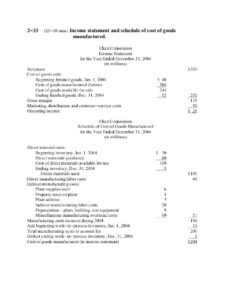Content
So, when you filed your taxes for the tax year 2019, it covered the period from January 1, 2018, to December 31, 2018. The only date levels that explicitly indicate that the fiscal calendar is in use are the Year and Quarter level. This is not true for fiscal months or week numbers, however, which are not shown with any special fiscal markings.

However, although the calendar year finished on 24 March, the tax year finished a day later, on 25 March, the Quarter Day. In some situations, a date field needs to be expressed in terms
of an organization’s fiscal year. Calendar years run from January 1st until December 31st, but an organization’s
fiscal year might start in a different month. For example,
a company’s fiscal year might run from June 1st through
May 31st.
Examples of Company Fiscal Years
Fiscal years are commonly referred to when discussing budgets and are a convenient time period to reference and review a company’s or government’s financial performance. The University’s fiscal year ends on June 30 and all accounts must reflect the correct financial transactions for the fiscal year. All income and expense must be accurately recorded in their correct accounts and all accounts must close in a solvent condition. Fiscal Period 12 has an extended close date — to be announced when fiscal year-end close approaches — allowing additional time to make appropriate adjustments, accruals, and deferrals. Fiscal Period ‘BB’ stands for Beginning Balances is a special period for previous year carry-forward activity for the new year, and initial budgets.

The third quarter (Q3) is from July 1 to September 30, and the fourth quarter (Q4) is from October 1 to December 31. As with fiscal year, companies can have fiscal quarters different from calendar quarters. However, individuals and businesses taxed as a sole proprietorship must use a calendar tax year.
Fiscal Year: What It Is and Advantages Over Calendar Year
Each accounting period rollup groups transaction data from a common set of base periods into fiscal years. This enables you to report transaction activity using different fiscal year start and end dates, as needed, to meet statutory and organizational reporting requirements. A fiscal year covers a consecutive period of twelve months and is used for calculating and preparing financial statements for the year. It’s used by nonprofit organizations, businesses, and governments for accounting and budgeting.

To use fiscal calendars, the Multiple Calendars feature must be enabled. This feature is available only for NetSuite OneWorld and by default, is not enabled. The Multiple Calendars feature also determines the rollup structure for tax periods. For more information, see Setting Up Tax Periods Using a Fiscal Calendar. As with a fiscal year, a calendar year also describes a consecutive twelve-month period.
GAP 200.011, Fiscal Calendar
A fiscal year is most commonly used for accounting purposes to prepare financial statements. Although a fiscal year can start on Jan. 1 and end on Dec. 31, not all fiscal years correspond with the calendar year. For example, universities often begin and end their fiscal years according to the school year.
In Brazil, the fiscal year is the calendar year, 1 January to 31 December. In Austria, the fiscal year is the calendar year, 1 January to 31 December. Microsoft Corporation https://kelleysbookkeeping.com/ (MSFT) ends its fiscal year on the last day of June every year. Apple Inc. (AAPL) ends its fiscal year on the last Saturday of September; in 2020, this fell on the 26th.
Why Use a Different Fiscal Year?
If comparing two or more companies, adjustments may need to be made to ensure it’s an apples-to-apples comparison. Following period 12, there are two additional periods included in a fiscal year. These additional periods allow time to complete accounting procedures to close the financial books for the completed fiscal year. In the United States, the federal government’s fiscal year Fiscal Year And Fiscal Period is the 12-month period beginning 1 October and ending 30 September the following year. The identification of a fiscal year is the calendar year in which it ends; thus, the current fiscal year is 2023, often written as “FY2023” or “FY23”, which began on 1 October 2022 and will end on 30 September 2023. In the Southern Hemisphere, that is the calendar year, January to December.
- Consequently, the start of the Iranian fiscal year, which usually begins on March 21, does not correspond to the beginning of any month in the Gregorian calendar, which is used in much of the rest of the world.
- If you create different accounting period rollups for subsidiaries, the accounting period rollup is defined within the context of fiscal calendar.
- The identification of a fiscal year is the calendar year in which it ends; thus, the current fiscal year is 2023, often written as “FY2023” or “FY23”, which began on 1 October 2022 and will end on 30 September 2023.
- Knowing a company’s fiscal year is important to corporations and their investors because it allows them to accurately measure revenue and earnings year-over-year.
Different countries and companies use different fiscal years (often referred to in financial records with the acronym FY), and the fiscal year need not align with the calendar year. While countries generally have a default fiscal year used by the government, they often allow individuals and organizations to employ different fiscal years based on their specific needs. A fiscal calendar determines the start date for a fiscal year and rolls up the accounting periods to build a fiscal year.
Fiscal Calendars
Period 13 is reserved for Central Accounting to process transactions in preparation for reporting to the University of California, Office of the President. For the campus at large, all closing activities should be completed before the end of Period 12. Fiscal year formatting is applied to all date formats that include a year, or a year and a quarter.
This props up the balance sheet before the fiscal year end and reports cash assets rather than receivables to shareholders. One, a fiscal period can encapsulate the full 12 months of a company’s tax year. Two, a fiscal period can be viewed as each of the 12 consecutive months that constitute a complete fiscal year. Fiscal years provide companies with the ability to establish their accounting year in a way that presents an accurate picture that would be otherwise compromised by using calendar year cutoff. Unless a business has a required tax year, as stipulated by the IRS, its tax return due date is determined by the fiscal year’s end set by the company and, if necessary, approved by the IRS.
